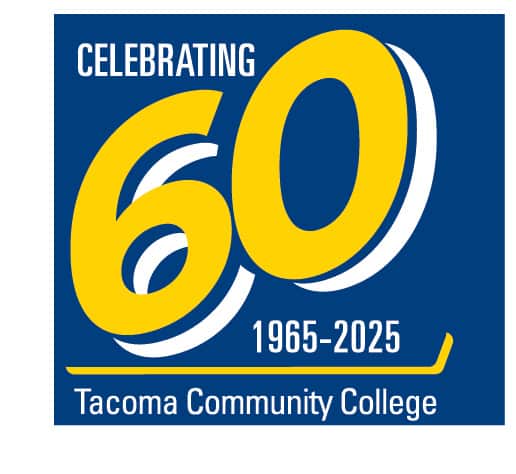Community Education
Gig Harbor astrophotography students capture stunning images of deep-space nebula
Students in Eric Wolgemuth’s astrophysics class spent hours this past semester in the parking lot of Gig Harbor High School training a powerful telescope on objects thousands of light years away. Using an array of sophisticated equipment and software, they produced stunning images of deep-space nebula.
Education Sponsor
Education stories are made possible in part by Tacoma Community College, a proud sponsor of Gig Harbor Now.
Their image of the North American Nebula, which is 1,600 light years from earth, shows a boiling cloud of red-tinted space dust and stars blooming into the dark void. Another image, looking like a sci-fi egg, shows the Crescent Nebula, 5,000 light years from earth.
Members of the astrophotography team are seniors Seamus Roberts and Ashley Isenberg and sophomore Mia Colombo. Jack Petrie, another senior, wasn’t formally enrolled in the class but also contributed to the project.
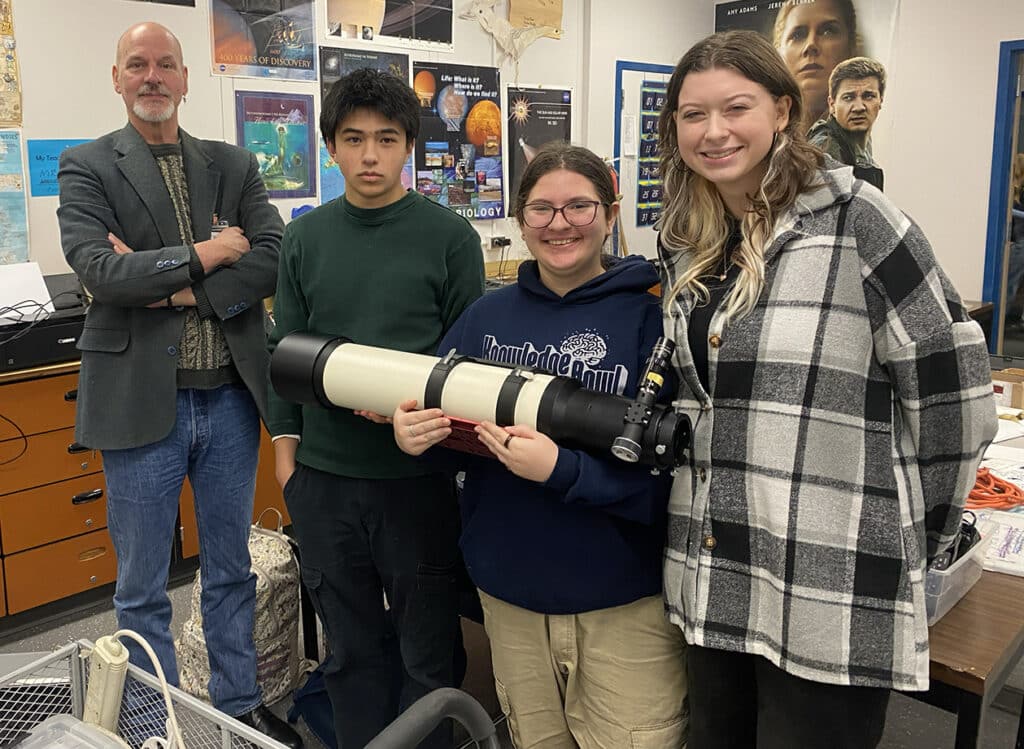
Gig Harbor High School astrophysics teacher Eric Wolgemuth stands with students in his astrophotography “instructional practicum,” an independent study in which they learned to capture images of deep-space nebula. From left, Seamus Roberts, Mia Colombo and Ashley Isenberg. Not pictured, Jack Petrie.
Chilling by choice
The students learning astrophotography from the ground up in Wolgemuth’s class volunteered early in the fall for an independent study called an “instructional practicum.”
“I started that last year,” Wolgemuth said. “The idea was that, wouldn’t it be nice if we could have part of the program where there were no tests, no paperwork, no classwork and really give the students a chance to dive into the minutiae of this?”
Long after the high school’s halls emptied, the team stood outside in the cold, monitoring their equipment. The students used hand-warmers and gulped cups of cocoa to fend off the chill. Starting at sunset, they were out for five hours or more on school nights, often into the wee hours on weekends.
Wolgemuth took a largely hands-off role.
‘Mr. Wolgemuth definitely has the best set-up,” Colombo said. “Because he has a sleeping bag and electric socks and he’s in a little camping chair. So he just kind of burritos into that for the whole night, and then just gets up if there are problems.”
Otherwise, the students ran the show.
Astrophotography explained
The team’s goal was to capture images of different elements that make up a nebula, then layer those images to create the final product. Here’s how it works.
“A nebula is essentially a large cloud in space of dust and gas and a lot of different stars,” Colombo explained. “Each of those gases reflects a very, very specific wavelength of light. Like hydrogen alpha, for example, reflects a very, very small, specific bit of red. So, we can set our telescope to pick up just that very specific red light that’s coming in.”
Besides red for hydrogen alpha, they had filters for specific forms of sulphur and oxygen. So their color palette was red, green and blue.
“You can see what kind of gases are in the nebula based on what specific light is coming in,” Colombo said.
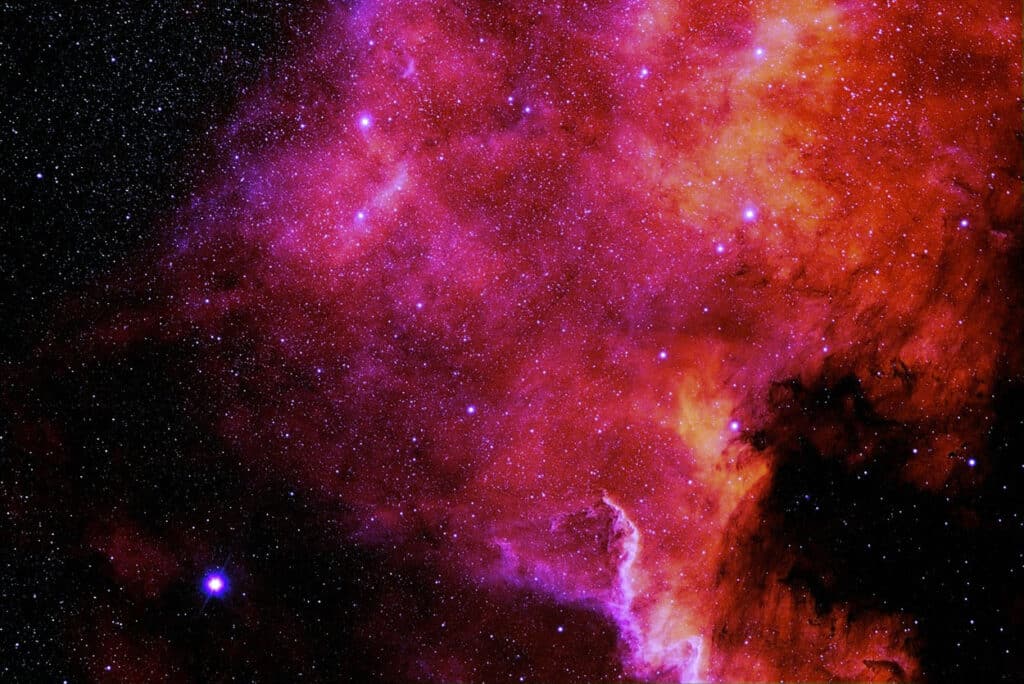
Students at Gig Harbor High School in fall, 2024 captured this image of the North American Nebula, 1,600 light years from earth. The students took part in an “instructional practicum” in Eric Wolgemuth’s astrophysics class.
Don’t drop this!
The students had access to a $7,500 telescope that Wolgemuth acquired for his program from an anonymous donor.
They used a high-resolution camera (capable of 6,248 x 4,176 pixels under ideal conditions), as well as a tracking camera to “lock on” to a guide star within the nebula while taking exposures. They also had a motorized telescope mount that allowed for precise tracking to keep up with the rotation of the earth.
Capturing each element required multiple exposures ranging from 15 seconds to 30 minutes. The images come in as black and white, with the appropriate color added during editing with Photoshop. The students layered multiple images for each element, then stacked those layers to create the final image.
“There is something satisfying about standing for hours in the cold, then adding color to the photos and stacking them to see the beautiful image,” Isenberg said in her bio on the GHHS Viewing Program website. Check it out to see the cool photos and details on the equipment they used.
Painstaking process
The students’ work in the field was constrained by weather conditions and the position of celestial bodies of interest relative to their location on earth.
You need a clear, still night, without a lot of atmospheric movement that could mar the images, Roberts explained. You also need to aim for objects directly overhead to avoid other atmospheric interference.
Before they even got started, the students had to master the complex equipment and multiple software programs to orchestrate the process. To pick their targets, they monitored deep space, calculating when the next nebula would be within their range.
In all, the team got in around 10 productive nights to capture images during the semester. At a minimum of five hours per night, they racked up 50-plus hours of telescope work alone.
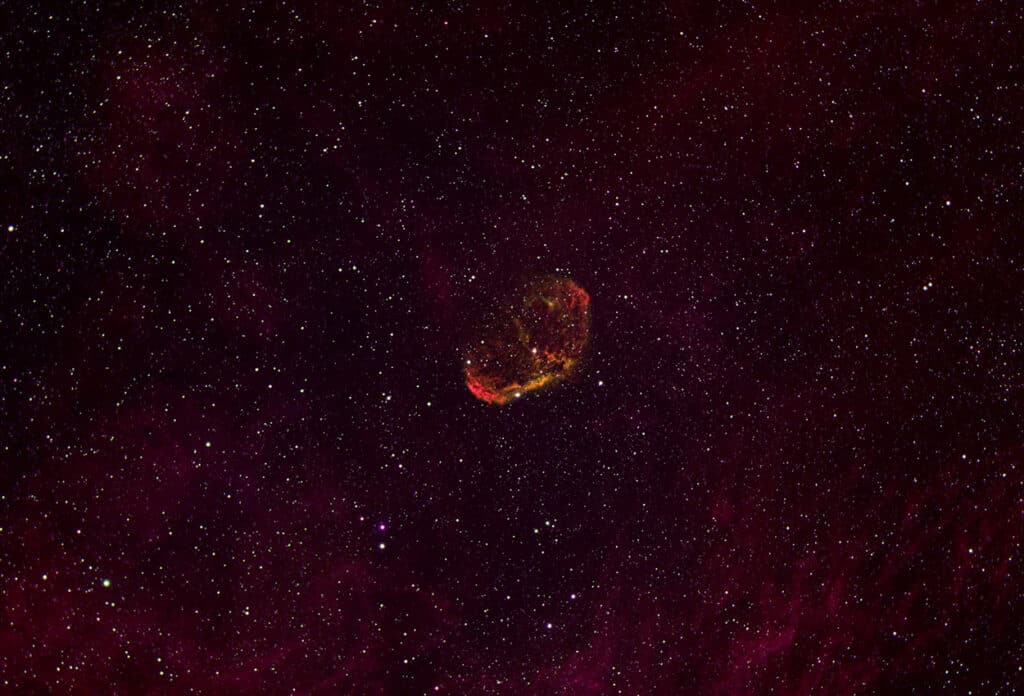
Students at Gig Harbor High School in fall 2024 captured this image of the Crescent Nebula, 5,000 light years from earth. The students took part in an “instructional practicum” in Eric Wolgemuth’s astrophysics class.
Each image requires 12 to 15 hours of editing. So, now we’re talking at least a couple hundred hours of direct work for fewer than a dozen images.
“Photographing deep-space objects can be humbling and can be a reminder of the mysteries of the cosmos,” Roberts wrote in his bio.
NASA-quality images
Wolgemuth, a self-described “science nerd,” earned a degree in physics from the University of Puget Sound, working on the side as a teacher’s assistant in the astronomy lab.
“I’ve always been interested in astronomy,” he said. “My first job out of college, I worked as a telescope operator at the Maunakea Observatory in Hawaii. So, dusk to dawn from six o’clock at night ’til five o’clock in the morning at almost 14,000 feet.”
Wolgemuth says his students’ images are NASA-quality — maybe not on par with those of the James Webb Space Telescope (launched in 2021), but, “I always say that this is near Hubble-quality. Our camera is a little better than Hubble, but it’s also 40 years younger.” The Hubble Space Telescope was launched in 1990.
Pointing to a blown-up image on the wall outside his classroom, Wolgemuth said, “All of this, the fine shading in through here, means that we’ve got a really quality image in three different filters, and that it’s blending so nicely. If you do a Google on North American Nebula, you will not find too many pictures like this.”
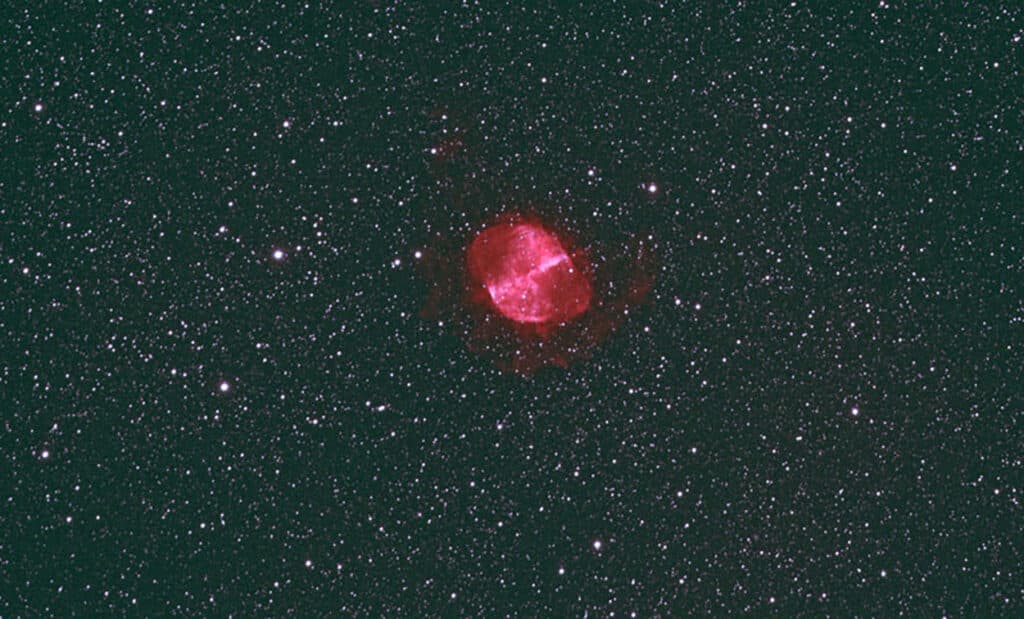
Students at Gig Harbor High School in fall 2024 captured this image of the Dumbbell Nebula, 1360 light years from earth. The students took part in an “instructional practicum” in Eric Wolgemuth’s astrophysics class.
A unique opportunity
Students in the practicum raved about the experience, especially the freedom they got to explore.
“There’s a lot of opportunity for curiosity,” Colombo said. “One thing that’s fun about science is that you can really experiment. And Mr. Wolgemuth really lets us do that. So, if we want to make a call, or we want to do something, or we have a nebula we really want to shoot, he gives us the opportunity to do that.”
“It’s probably my own hubris,” Wolgemuth said, “but I can’t imagine there are too many public high schools in the country that do this: the amount of work, the blend of computer science and astronomy that you have to do to do this, let alone the patience to spend hours and hours and hours in the cold, as these guys have done.”
His reaction on first seeing the team’s North American Nebula image?
“Absolutely stunning,” he said. “I couldn’t be more proud of all the work these guys have been doing.”
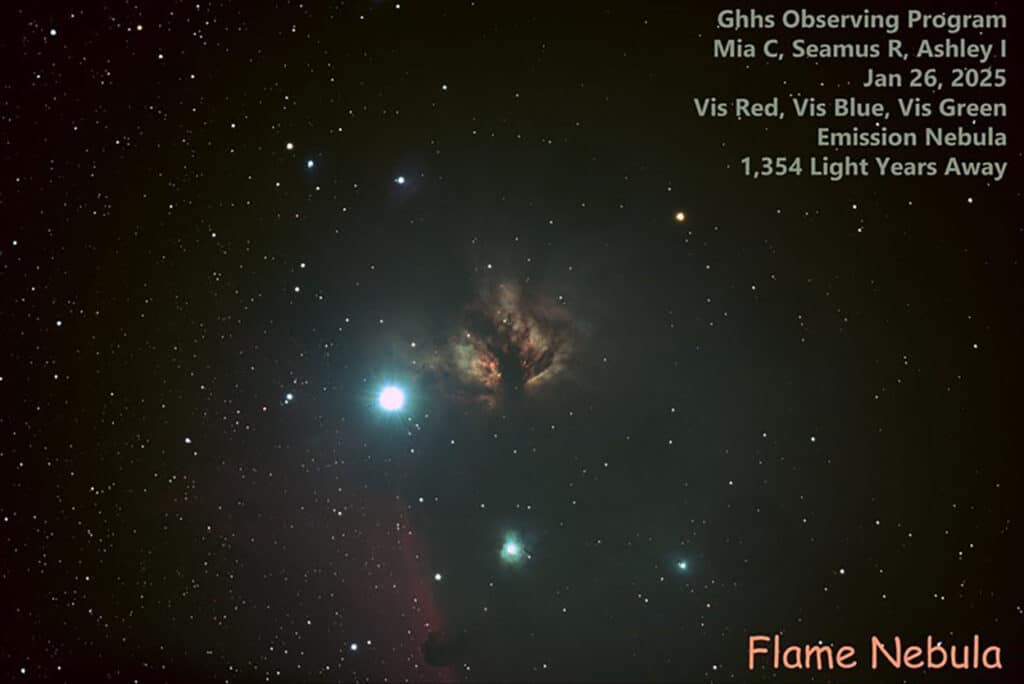
Students at Gig Harbor High School in fall 2024 captured this image of the Flame Nebula, 1,354 light years from earth. The students took part in an “instructional practicum” in Eric Wolgemuth’s astrophysics class.

